Title
lookout: mound (seen from Merlin’s Lookout) Hill End
2004
Artist
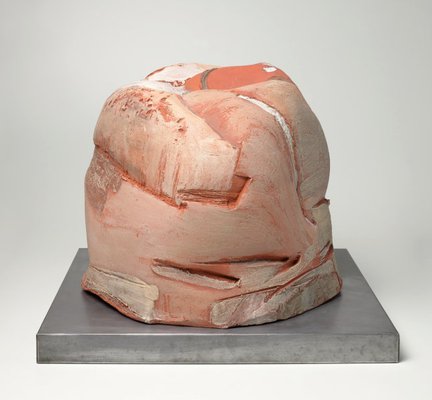
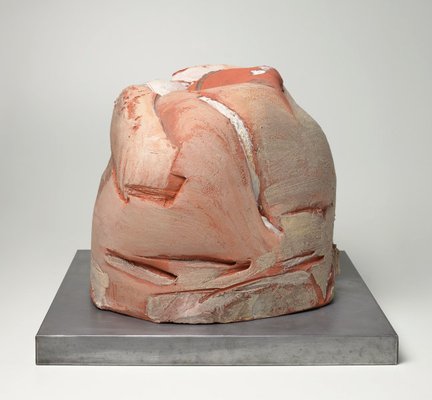
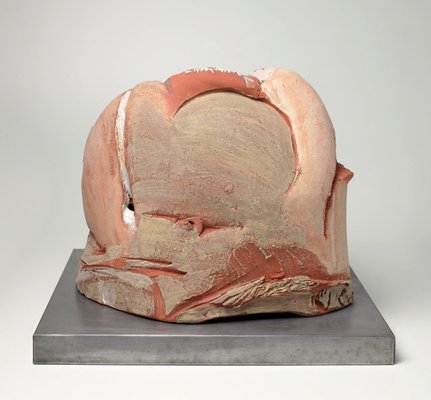
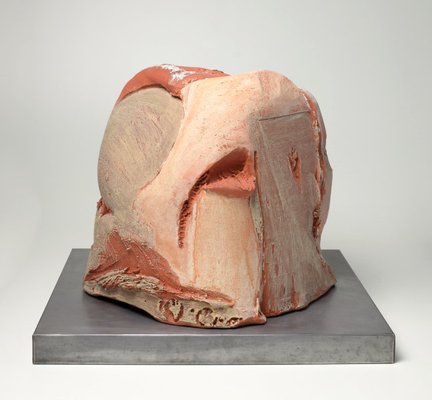
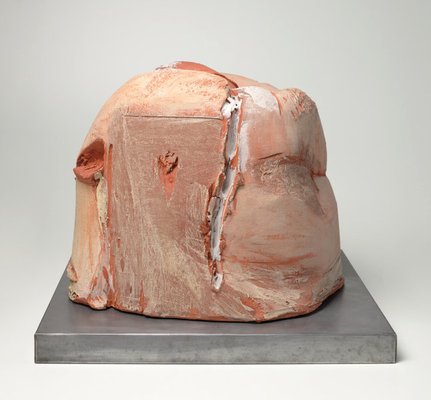
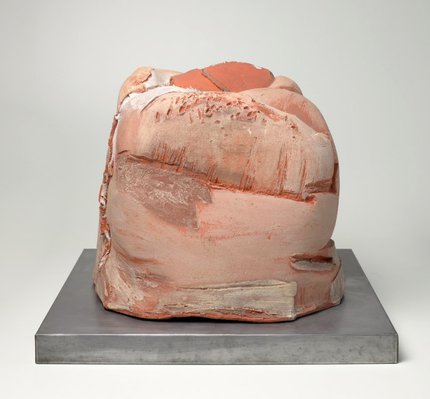
-
Details
- Date
- 2004
- Media category
- Ceramic
- Materials used
- terracotta clay, vitrified engobes, ash, oxides, found pigments
- Dimensions
- 46.0 x 60.0 x 54.0 cm
- Credit
- Vicki Grima ceramics Fund 2023
- Location
- Not on display
- Accession number
- 9.2023
- Copyright
- © Toni Warburton
- Artist information
-
Toni Warburton
Works in the collection
- Share
-
-
About
Toni Warburton is known for her experimental approach to ceramics – a medium she has harnessed since the 1970s in expressive works that evoke ecological cycles and human encounters with the natural world. Working intuitively, she uses performative actions to transform clay and glass into evocations of vast mountains, arid sand dunes and aquatic ecologies. At certain points, the tactility of the artist’s hand asserts itself; at others Warburton invites a play of chance. All the while her work carries a magnetism that prompts deeper contemplation of the environments she is responding to.
Warburton’s lookout series was created during residencies at Hill End in regional New South Wales. When making these ceramics, she looked to Indian rituals and approaches to manipulating clay that, for the artist, invite a more embodied connection with material. The resulting eclectic, painted mountain forms bear gestural shapes and patterns that in some works vibrantly depict flora, fauna and human presence, while others, such as lookout: mount (seen from Merlin’s Lookout) Hill End, are more minimal and abstract. The series title intentionally alludes both to a lookout as a vantage point, and to ‘look out’ as a phrase used to warn or to implore care. Through this wordplay, Warburton sought to critique the colonial gaze over the Australian landscape, instead inviting a more immersive experience of place. Warburton says of her lookout works:
In the lookout series, I wanted to de-explore the notion of landscape as view and a mountain as place to view a landscape from, and play with the paradox of immersion in that the form of a mountain is only perceivable from a distance and once you are on that terrain you somehow become part of it. There is also the ecological notion of ‘lookout’ meaning to take care, beware and look out for the land.
To create the work for the lookout series, I altered the volumes and surfaces of large wheel thrown clay forms made to my specifications by Lino Alvarez of La Paloma Pottery, Hill End.
To make the sculpture, mound (seen from Merlin’s Lookout) Hill End, 2004, I choreographed quick body actions to throw found wooden objects at the soft clay mound form. I wanted to see how the impact would change the form and its surface when chance, timing, and invention were involved. The plasticity of the clay membrane and internal air pressure enable applied forces to shift a hollow clay form without radically collapsing the material into formlessness. The mound form was bisque fired in the La Paloma electric kiln, then painted with ceramics engobes pigments and glazes and fired again. In the Timaeus, Plato alludes to Chora, an elusive energy of formlessness that swirls into becoming. The emotional power of Chora inspires my form making processes as I mediate between volume, void and surface.
-
Exhibition history
Shown in 1 exhibition
Open Studio (brick vase clay cup jug), Art Gallery of New South Wales, Sydney, 01 Jul 2023–07 Jan 2024
